2021 Porsche Panamera 4S E-Hybrid Review: Who Needs the Turbo?

For 2021, Porsche’s big four-door has gone under the knife for the subtlest of facelifts. More important is what’s happening under the skin, especially with this Panamera 4S E-Hybrid trim. Pairing the familiar 2.9-liter turbocharged V6 with a bigger battery and stronger electric motor, the 4S now puts out 552 horsepower and 553 lb-ft of torque. The old-school part of the equation is good for 443 hp and 405 lb-ft; the new-age, 134 hp and 295 lb-ft. Their vastly different deliveries explain the combined tallies.
That’s as much combined power as the previous Panamera Turbo, but with the added ability of silently wafting around city centers. With this newfound range and the same impressive handling that marks it out amongst the big-sedan segment, is the Panamera 4S E-Hybrid the pick of Porsche’s four-door lineup? If you aren’t quite ready to go full-EV, it certainly looks that way, doesn’t it?
On-demand power, occasional serenity
Turn the E-Hybrid on and you’re greeted by the sound of nothing at all. The Panamera starts in E-Power mode, drawing power exclusively from its larger 17.9-kWh battery pack, up 27 percent over the previous model. How far it will take you without waking the gas engine depends on how patient you can be with your right foot—and the local topography. Getting out of my underground, for example, was enough to consistently switch the six-pot on. The previous (non-S) E-Hybrid was rated for 14 miles (22 km) of EV-only range, so expect more here. Around the city, I rarely had to rely on the V6, and when I did, it would quickly shut off shortly after. Short trips, like our local grocery run, were completely almost entirely on electrons.
SEE ALSO: Why the Taycan is the Best Porsche to Drive From Toronto to Ottawa and BackPorsche allows the driver to have finer control over the battery’s charge rate too, with the central screen’s Hybrid menu. E-Hold keeps the charge at its current level, while E-Charge prioritizes charging the battery via the V6. What’s more, setting the Panamera to Sport or Sport+ has the turbocharged engine active all the time, with additional regenerative braking; recharging is up 50 percent in the latter mode versus the 2020 model. So when you do decide to let loose on your favorite backroad, the Panamera rewards you with more battery charge at the end. How’s that for progress?
FAST FACTS
| Engine: | 2.9L V6 Turbo, electric motor w/ 17.9 kWh battery |
| Output: | 552 hp, 553 lb-ft |
| Transmission: | 8AT, AWD |
| US fuel economy (MPG): | N/A (see text) |
| CAN fuel economy (L/100KM): | N/A (see text) |
| Starting Price (USD): | $120,000 (est, inc. dest.) |
| As-Tested Price (USD): | $150,000 (est, inc. dest.) |
| Starting Price (CAD): | $130,000 (inc. dest.) |
| As-Tested Price (CAD): | $164,620 (inc. dest.) |
The hand-off between electric and gas power is largely seamless. The only weirdness happens when the engine comes on steam right around where the eight-speed, dual-clutch auto would want to insert a shift. There’s a high-rev drone for a moment and then it’s back to business. And boy is business booming. With the Sport Chrono pack, Porsche says the 4S E-Hybrid will surge to 60 mph in 3.5 seconds, and it feels even quicker from the driver’s seat. On the flip-side, I saw slightly less than 24 mpg during my 250 or so miles with the Panamera (an even 10.0 L/100 km).
There is one thing you’ll miss if not springing for the Turbo (or GTS): the sound. My tester’s optional sport exhaust gives the 2.9-liter V6 its best singing voice in Sport and Sport+ modes, but it can’t match a V8.
Don’t fix what ain’t broken
Porsche hasn’t done too much under the skin for this facelifted Panamera. There’s little reason to: it remains one of the most accomplished big four doors out there. The chief changes for 2021 focus on the steering and braking. The electric power steering system is the same as the one in the 992-generation 911 and, yes, the Taycan. The available four-wheel steering in those cars is also on the menu for the Panamera, though this particular car doesn’t have it. Porsche’s engineers focused on giving the left pedal a more progressive feel for 2021 as well. Without a 2020-spec car on hand, I can’t tell you how successful they were comparatively, but pedal feel is consistent, with one of the smoother transitions between friction and electronic braking.
SEE ALSO: 2020 Mercedes-AMG GLC 63 S Review: Muscle Utility VehicleThanks to the various hybrid gubbins, the Panamera 4S E-Hybrid weighs in at a chunky 5,004 lb (2,270 kg). It does a solid job masking that weight, partially through the standard air suspension, and partially through the brute force that is enormous rubber at all four corners (275/35 front, 325/30 rear). The adaptive damping provides a smooth ride in the regular modes, with a tighter, more controlled feel on sportier settings. The steering weight also increases correspondingly. Neither ever gets to the point of overbearing: this is a big sedan, after all. Start flinging the Panamera at tighter corners and while the body stays flat and the tires hold on tenaciously, you feel the inertia swinging around. Porsche might be able to slightly bend physics, but it can’t completely overcome them. Not yet, anyway.
Even at highway speeds, the Panamera can run on solely electric power. (It’s EV-only top speed is 87 mph, or 140 km/h.) Unsurprisingly, it makes an excellent long-distance cruiser this way, rolling along in near-silence, cocooning its occupants from the harsh realities of the outside world.
Oh yeah, and there are changes to the exterior, but you’ll need to be a Porschionado to tell. Last year’s optional SportDesign front end is now standard, and the rear lights now more gradually blend into the light strip between them. New wheels round out the changes. Again it ain’t broke. The very cool Sport Turismo wagon is still available, as is the Executive, which adds six inches between the B- and C- pillars.
Business-like interior
My tester’s interior goes for maximum contrast from the Carrera White exterior paint, with an all-black leather get-up. It’s comfy, clean, and spacious—but also just a little boring. Some color wouldn’t go amiss, and it’s certainly possible with Porsche’s deep customization. Everything feels great to the touch though, and it’s screwed together with typical Porsche solidity. The wide center console isn’t overloaded with controls, so it’s easy to hit what you need without prodding the wrong thing. The 12.3-inch touchscreen runs the latest version of Porsche Communication Management. It’s not as flashy as Mercedes’ MBUX, but PCM is straight-forward, snappy, and I dig its minimalist design.
SEE ALSO: 2020 BMW M8 Competition Gran Coupe Review: More to LoveThe instrument cluster includes digital sections, which makes navigation easier to view. A head-up display is optional, but not equipped here. Unique to E-Hybrid models is a small semi-circle of LEDs set within the bottom of the tachometer. They give a real-time look at whether you’re using up the battery’s juice, or topping it up.
The driving position is excellent, with the 14-way front seats making it easy to find the right setup. They’re comfy too, with the right amount of lateral support. The rear buckets are good too: this Panamera comes with the 2+1 second row, but nobody is going to want to sit in the middle with the chunky center console right in front of them. Headroom is good for adults, even with the two-pane sunroof. An optional Premium package adds in four-zone climate control—so everyone should be happy—and soft-close doors. It also includes Porsche’s dynamic lighting system and lane-change assist.
The driver assist systems don’t end there. This car also comes with InnoDrive, a smarter level of adaptive cruise control. InnoDrive and I have had our issues before, with sudden drastic highway braking, but with the Panamera, it functions smoothly. The system adapts based on posted speed limits, and it kept the Panamera firmly in its lane without any ping-ponging.
Rear trunk space is 14.3 cubic feet (403 liters), expanding to 44 cubes (1,242 L) with the rear seats folded.
Verdict: 2021 Porsche Panamera 4S E-Hybrid Review
Here’s where I tell you this six-figure Porsche is a deal.
Okay, in absolute terms, of course it isn’t. Porsche hasn’t announced US pricing yet, but the Canadian sticker is $130,000, including destination. (Our tester runs to $164,620 CAD after myriad options.) Taking into account pricing differences elsewhere in the lineup, expect the 4S E-Hybrid to start for somewhere around $115,000 to $120,000. That’s more than an Audi RS7 (or RS6 Avant, mmmm), but less than a BMW M8 Gran Coupe. The Porsche won’t be far behind either in a straight line, provide just as much fun in the corners, and it’ll embarrass both at the pumps. It’s also likely to significantly undercut the $154,3250 2020 Panamera Turbo.
SEE ALSO: 2020 Porsche 718 Spyder Review: …and Nothing Else MattersThe tougher competition is the car from the very beginning of this article: the Taycan. Personally, I’d go that way, as the sleeker, slightly smaller EV simply feels more special. If you’re not quite ready to go entirely EV though, the Panamera 4S E-Hybrid is the next best thing. It offers all the performance of a Turbo—if not the sound—with added frugality. It’s the smart choice in the new Panamera lineup.
Become an AutoGuide insider. Get the latest from the automotive world first by subscribing to our newsletter here.
LOVE IT
- EV-only city driving
- Just as capable carving corners as wafting
- Sport mode increases battery charging!
LEAVE IT
- The Taycan exists
- Lacks Turbo's V8 noise
- Make mine a Sport Turismo, thanks Porsche!

Kyle began his automotive obsession before he even started school, courtesy of a remote control Porsche and various LEGO sets. He later studied advertising and graphic design at Humber College, which led him to writing about cars (both real and digital). He is now a proud member of the Automobile Journalists Association of Canada (AJAC), where he was the Journalist of the Year runner-up for 2021.
More by Kyle Patrick



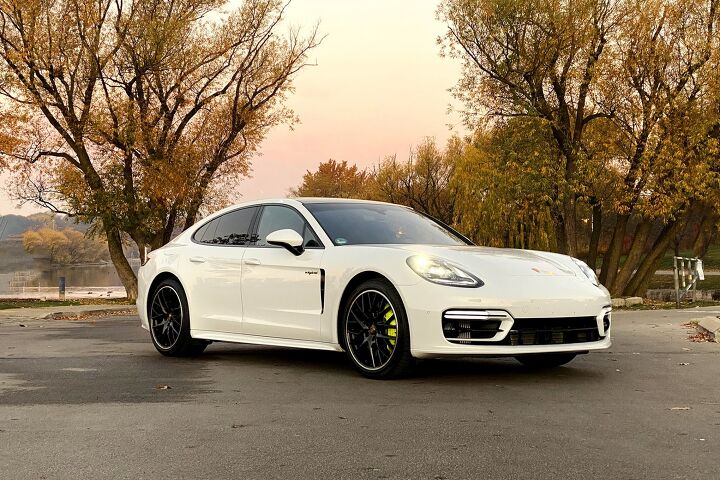

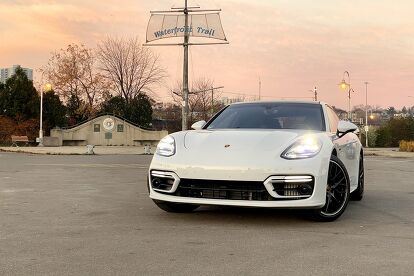













































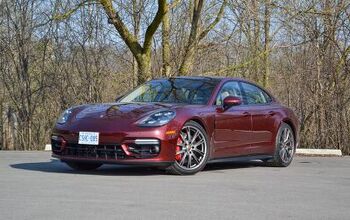
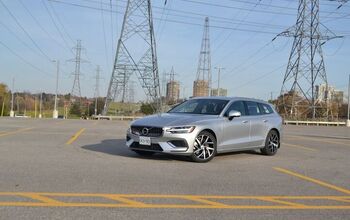






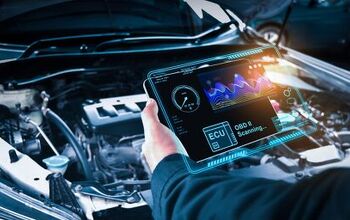

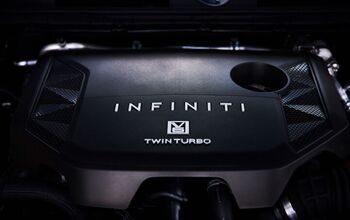
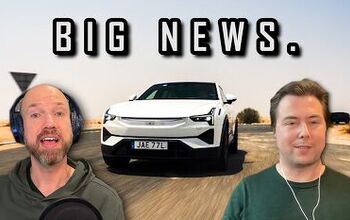



Comments
Join the conversation
buying a 2022 Panny 4E, let you know...